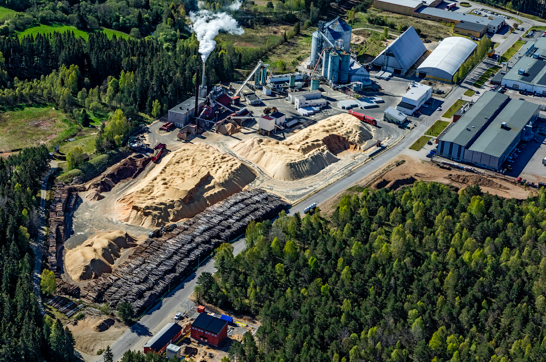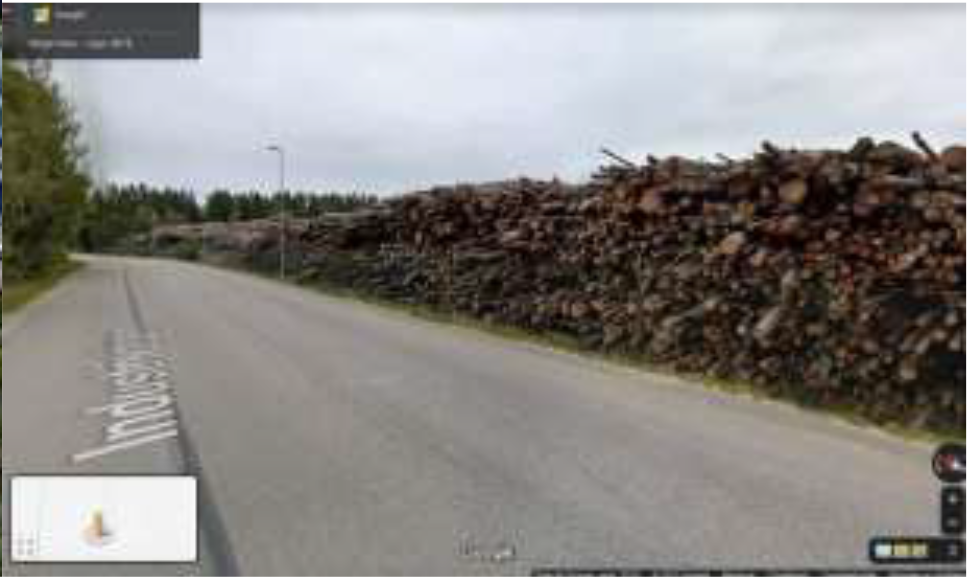New report refutes sustainability claims from biomass industry
More than 40 biomass plants across Europe using stemwood for energy.
EU| New report from Forest Defenders Alliance, an international coalition of environmental NGOs against biomass, demonstrates that many wood-burning power plants and wood pellet manufacturing plants in the EU appear to be using trees logged directly from forests, despite claims to use sawdust and other residual waste for energy. European Commission scientists have warned that burning trees for energy undermines both the EU’s climate and nature restoration goals. The report comes as EU leaders, including Vice President Frans Timmermans of the European Commission, are expressing alarm about the amount of trees being burned for energy, and pledging to reform biomass policy.
A 2021 report by the European Commission’s Joint Research Centre identified burning trees and the larger wood chunks left over after logging as a “lose-lose” scenario for nature and the climate. Overall, the EU’s wood burning emits over 311 million tonnes of CO2 per year, similar to reported greenhouse gas emissions from Spain. Despite these emissions, EU policy treats burning wood as having zero carbon pollution and allows member states to subsidize wood burning. Subsidies for all biomass use, including wood-burning, are around €17 billion euro per year.
The report compares evidence for use of logs with company website statements about the type of wood they utilize, finding that 25% of the companies make misleading claims, usually that they utilize sawdust and other residues, with no mention of stemwood. The report also examines company claims about climate impacts of burning forest wood. Despite unequivocal statements by the Intergovernmental Panel on Climate Change and leading scientists that forest biomass should not be assumed to be “carbon neutral” or beneficial to the climate, 25 of the companies – more than half – make misleading claims of this nature, in direct contradiction of accepted science. The claims often rise to a level that seemingly should trigger scrutiny under the EU’s consumer protection laws.
There’s one word for the biomass industry’s sustainability claims: ‘fiction’. If these snapshots can capture so many instances of the biomass industry using trees, the environmental damage from the entire industry is far worse than previously understood. — Luke Chamberlain, EU Policy Director for the Partnership for Policy Integrity
Mr. Frans Timmermans clearly wants to reduce the number of trees burned for energy, but doesn’t understand that mill residues can’t meet even current demand. This report shows how common tree-burning already is, and how important it is that the EU stop counting forest burning toward renewable energy targets. — Fenna Swart of the Dutch NGO Clean Air Committee
Contact
Partnership for Policy Integrity
Luke Chamberlain | lchambo@pfpi.net | +43 676 412 188
Comite Schone Lucht
Fenna Swart | fennaswart25@gmail.com |+31 6 415 14 330
Members of the Forest Defenders Alliance issued the following statements:
Sweden:
“What we see in these photos is what the biomass industry and EU policy calls ‘residues’ – old trees, dead wood, deciduous trees – much of it sourced from irreplaceable of old-growth forests,” said Lina Burnelius, Project Leader at Skydaskoggen in Sweden. To make matter worse forests aren’t just burned as fuel they’re are also replaced with climate- and environmental harmful plantations, the opposite of a our must needed climate-heros: forest ecosystems”
Germany:
“The world’s largest pellet companies see Germany as their next big market. This would be a disaster for forests and the climate,” said Jana Ballanthien, Forest Campaigner, ROBIN WOOD. “The German government must rapidly enact to stop subsidies for burning wood. Germany must set a good example and be a strong voice against the burning of wood in European climate policy. Burning our forests is not renewable!”
Portugal:
“The classification of forest biomass as renewable energy is promoting the burning of trees at a time when we should be urgently protecting forests and reducing carbon emissions,” said Nuno Forner, Policy Officer at Zero (Portugal). “Instead of real forestry waste, wood is being burnt inefficiently, contributing to unsustainable forest management.”
Estonia:
“Estonia’s forests were under heavy logging pressure already before the war in Ukraine, but now we see the timber industry taking unscrupulous advantage of the situation,” said Liina Steinberg of Save Estonia’s Forests. “We’re running out of forests, and the clearcut-prone state forest managers are cutting down forests close to villages and towns which are very important for local people and visitors to our country.”
Italy:
“European citizens pay billions of euros for so-called green energy that harms forests and the climate. This is nothing but greenwashing,” said Gaia Angelini, Green Impact, Italy. “Forests are our future, they must be conserved for the common good and to minimize climate impacts and preserve biodiversity.”
Finland:
“We need protect Finnish forests, not burn them for energy” said Sommer Ackerman, an activist with Europe Beyond Burning, a campaign of Fridays For Future. “The EU needs to drastically lower their emissions which means that they must stop with their false solutions. We must listen to the science, stop subsidizing the burning of biomass and instead fund true renewables.“
Photos: The Biomass Industry is Burning Logs

Scandbio Pellet Plant in Ulricehamn, Sweden.
Photo from company website, 2021.

Google Street View.
Misleading company claims suggest pellets derived from waste wood.

Pinewells Pellet Plant, Sarzedo, Portugal . 2021 image taken from Google Earth Pro showing biomass plant and massive stockpile of whole logs. Image copyright: 2021 Google Earth/CNES/AirBus.
Photo assets from the report, sorted by country, are available at https://forestdefenders.eu/biomass-photos/.
